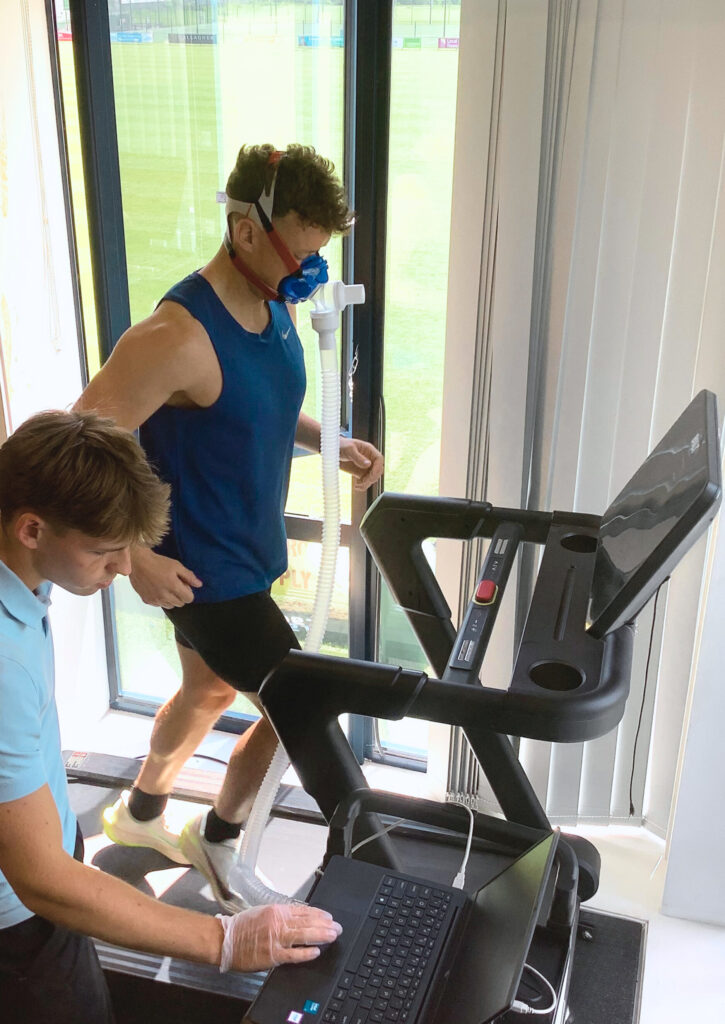Understanding Your VO₂ Max Score: What’s Good for You?
When you receive your VO₂ max result from a proper laboratory test, it’s natural to wonder: Is this a good score? The answer is not as simple as a single number, its meaning depends entirely on your individual characteristics and context.
For example, a VO₂ max of 40 ml/kg/min could be excellent for one person, average for another, and below average for someone else. This is because age, sex, body weight, and even elevation above sea level all influence how your result should be interpreted:
- Age: VO₂ max typically peaks in your early 20s, after which it can decline by 5–20% per decade if not maintained with regular physical activity. Therefore, what’s “good” for a 25-year-old will differ from what’s expected of a 60-year-old.
- Sex: Men generally present higher VO₂ max values than women because of differences in muscle mass and fat distribution, even when fitness levels are comparable. Therefore, scores should always be interpreted within the context of your sex.
- Body Weight: Since absolute VO₂ max (L/min) is strongly influenced by body size and genetic factors, results are standardised and reported as relative VO₂ max (mL/kg/min). This adjustment accounts for differences in weight, enabling fairer comparisons between individuals.
- Elevation: Living or training at higher altitudes can mildly lower VO₂ max performance due to reduced oxygen availability. While this effect is generally minor at moderate elevations, it can influence high-level athletic testing.

However, the most meaningful comparison is always against yourself over time.
So… Is My VO₂ Max Good or Bad?
In reality, there is no universal “good” VO₂ max, only what is appropriate for your age, sex, and body profile. To help make sense of results, sports scientists use normative data tables (see below), which allow comparisons within your specific demographic group.
Typical VO₂ max for males measured in mL/kg/min:

Typical VO₂ max for females measured in mL/kg/min:

However, the most meaningful comparison is always against yourself over time. The real value of VO₂ max testing lies in tracking your progress across repeated tests. Whether you aim to improve endurance, general health, or athletic performance, the goal is to increase your own score relative to past results—not to chase population averages.
A Common Misconception About VO₂ Max
It’s widely (and wrongly) believed that VO₂ max is mostly genetically fixed or unchangeable with age. While your genetics and biological aging do set your baseline and ceiling, research clearly shows that VO₂ max is highly trainable. Under the right training conditions, some people have achieved improvements of up to 50% in their VO₂ max.
This means your score is not set in stone, it can improve dramatically with targeted aerobic training and lifestyle changes. Each properly conducted VO₂ max test provides a reliable benchmark to measure that progress.
You can find out more about our VO₂ max testing, click here. You can book an appointment to discuss VO₂ max testing at our Castleknock GAA Clubhouse Physiotherapy Clinic through our website www.somertonphysio.ie, email us at [email protected] or call us on 01 9069566
Please do not hesitate to contact us if you have any questions.
You can follow us on our Facebook page and Instagram for more updates.
